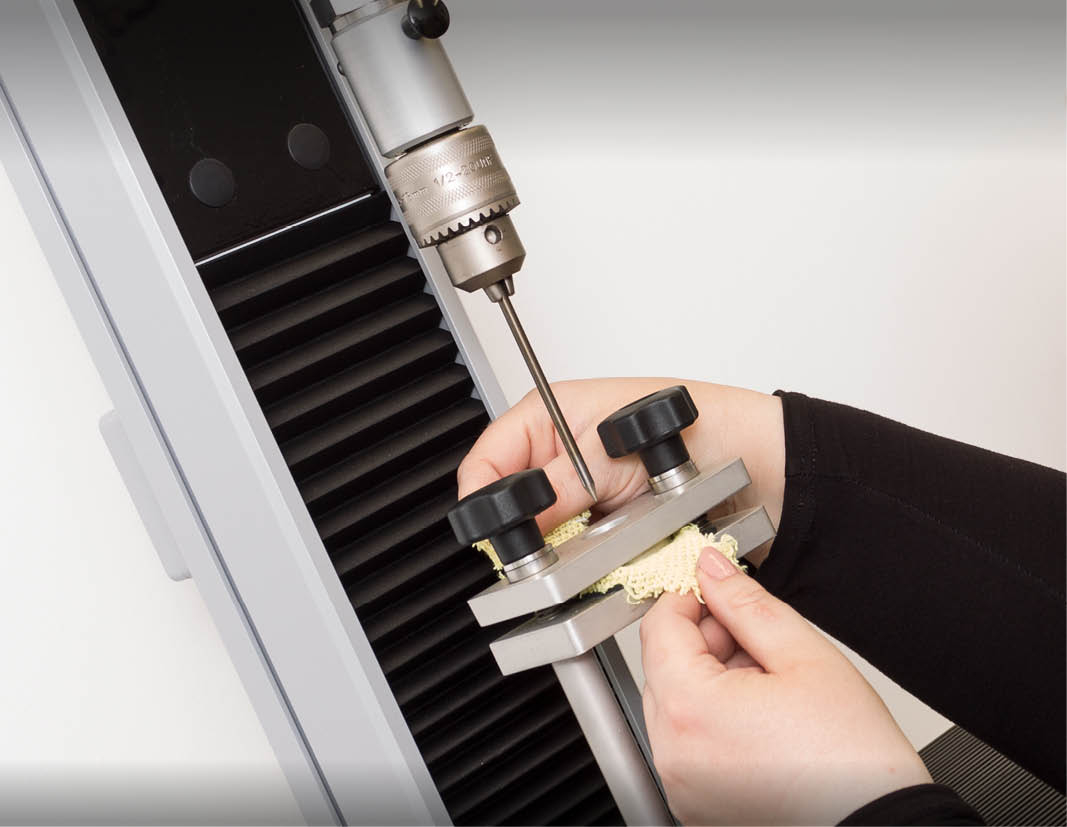EN388:2016 Puncture Resistance Test Method
The tensometer machine is equipped with a large 4mm-wide probe with a rounded stylus. The stylus is pushed 50mm through the material taken from the palm of the glove at a speed of 100mm/min until the rounded tip penetrates the test sample.
Four specimens are tested, and the force at the peak is recorded.
How is the Test Measured?
The Puncture Resistance Test gives four classification levels, from 1 to 4, with 1 being the lowest and 4 giving the highest puncture resistance. The tensometer is fitted with a load cell that measures the force, in Newtons, required to puncture the material up to a maximum distance of 50mm. The test provides insight into which gloves offer the best protection against industrial puncture hazards.
Four samples are tested, with the lowest result achieved determining the final classification as follows:
Rating of Glove and the puncture resistance (Newtons)
- Level 1 – 20 Newtons
- Level 2 – 60 Newtons
- Level 3 – 100 Newtons
- Level 4 – 150+ Newtons

Does Puncture Resistant Mean Needlestick Resistant?
While the EN388 standard classifies puncture resistance, it does not cover hypodermic needle stick hazards. The EN388 standard test for puncture uses a large 4mm wide probe with a rounded stylus, whereas ASTM F2878; resistance against hypodermic needle punctures, specifies use of 21, 25, or 28 gauge needles.
ANSI 105 and the ASTM F2878 Hypodermic Needle Puncture Resistance Test
ANSI 105 addresses the classification and required test methods for hand protection in industrial applications. This standard specifies the use of the test method ASTM F2878 which measures the relative hypodermic needle puncture resistance offered
by various materials. This test uses a tensometer to drive a 25-gauge needle through the material. Twelve punctures are performed and the average force in newtons is reported. ANSI 105 defines five levels of needlestick resistance, with level 5 capable of resisting 10N of pressure.
Needlestick injuries are a potential hazard in various industries such as glass manufacturing, waste management, and metal fabrication. The ASTM F2878 test method assesses the force needed for a single-use needle, to penetrate the protective material.

As manufacturers of high performance hand protection we have a range of coated and leather gloves delivering puncture resistance level 3 and above, as well as our Rhinoguard cut, puncture and needlestick glove 49-6220.
View the range and request your free trial today.






